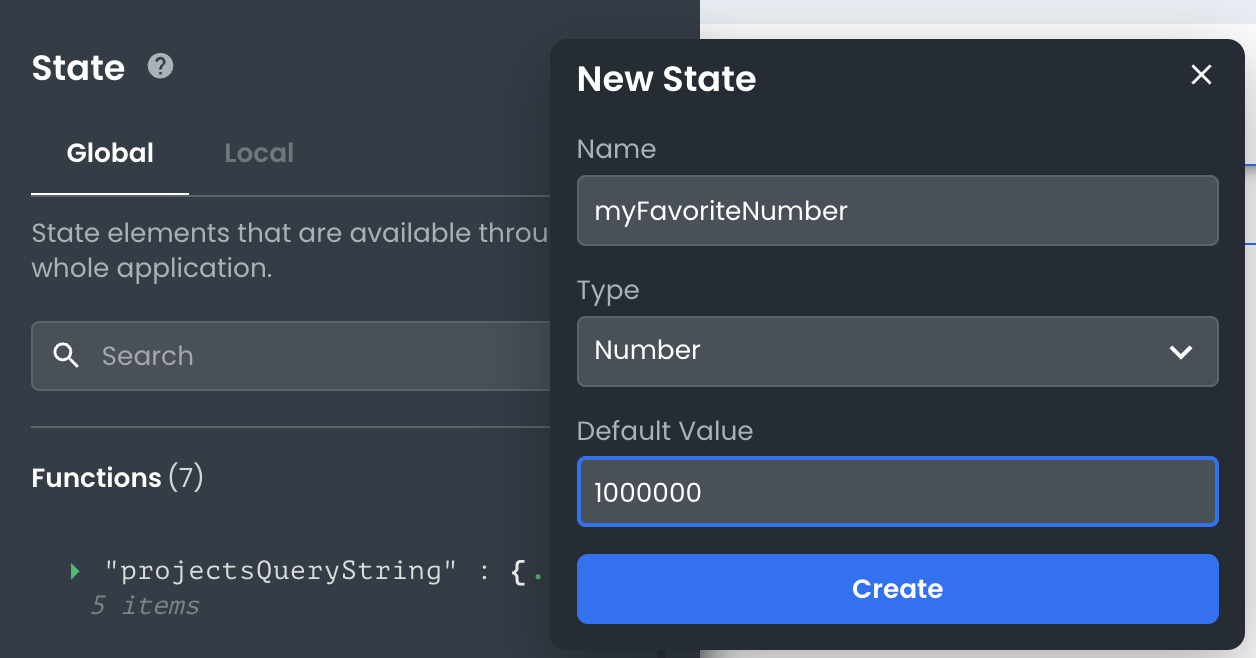Adding custom state data entries
This article describes how developers can add custom state entries in their front-end applications.
What are custom state data entries?
Custom state data entries allow developers to add extra information to their applications' front-end state. This extra information can be used to track application data or temporarily persist data on the client side (in localStorage).

How do I add a custom state data entry?
To add a custom state data entry, developers should open the State Management pane in their project and click the "+" button. This will open the "Add Custom State" dialog, where developers can choose a key, data type, and default value for their new state entry.
Available types:
- Boolean
- Number
- Object
- String
- Array
Whether you create the custom state entry within the global or local namespace will affect its visibility to other elements' scopes. See understanding local vs. global state documentation for further detail.
What are some use cases for custom state data entries?
Custom state data entries can be used for a variety of purposes, including:
Tracking application data : e.g. a "currentUser" entry that stores information about the logged-in user
Temporarily storing data on the client side : e.g. a "cart" entry that stores information about items in a user's shopping cart
Debugging purposes : e.g. an "isDebug" flag that enables/disables certain features in the application for debugging purposes
They are a very flexible feature of App Builder that can enable anything from custom authentication flows to new theming configurations.